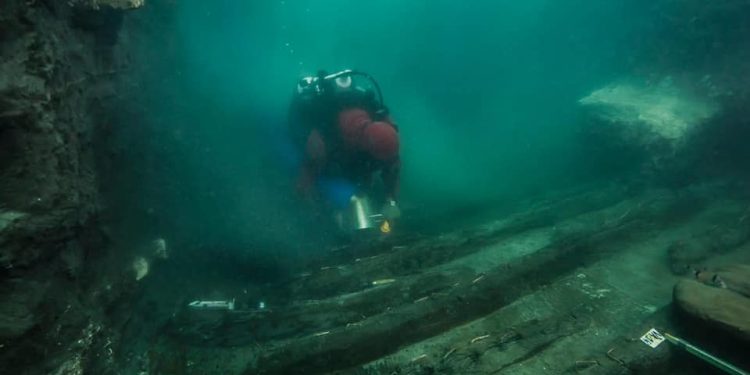The Egyptian Ministry of Antiquities has reported discovering an ancient shipwreck in the ruins of a sunken city called Heracleion, off the coast of Alexandria, Egypt.
According to reports, archaeologists have identified the remains of an ancient military ship believed to be just over 2,000 years old amongst the city’s ruins. In addition, researchers have identified what appear to be several stone blocks from a temple that likely crushed the boat, causing it to sink during a natural disaster that took place around 2,000 years ago.
The discovery was made at the Egyptian city of Thonis-Heracleion, a prosperous port city founded at the mouth of the Nile Delta. Although Heracleion was once an important economic center, it was devastated by the forces of nature, sinking rapidly as the Mediterranean sea devoured it.
The remains of the city’s houses, temples, and markets have lain ten meters deep in the Abu Qir Bay, east of present-day Alexandria. As a result, underwater archaeologists regularly make exciting discoveries there. Among them, shipwrecks, statues, and stone tablets with inscriptions – the latter made it possible to decipher the city’s name: Heracleion (named by the Greeks and Thonis by the Egyptians; hence the binary name).
The shipwreck identified among the ruins of the sunken city is believed to have been a military vessel in service during the 2nd century BC.
Researchers from the French-Egyptian archeological mission who made the find have explained that the vessel is a 25-meter long galley, which was equipped with oars and a large sail, confirmed by the Egyptian Ministry of Tourism and Antiquities in a Facebook post detailing the discovery.
https://www.facebook.com/moantiquities/posts/179978074163747
The discovery of the shipwreck is fascinating, according to researchers, since vessels from that period in history are extremely rare.
When Temples Sink Ships: Catastrophes at Heracleion
The underwater investigation revealed that the vessel was struck with several massive blocks of stone from the nearby temple of Amun during one of the many catastrophes that struck Heracleion, sealing the ship’s fate at the bottom of the sea.
Dr. Mustafa Waziri, Secretary-General of the Higher Archaeology Council, revealed the ship was docked in the canal which flowed along the side of the Temple of Amun. As the ship was docked, an earthquake struck the city, causing the temple to collapse and the ship to sink.
While the shipwreck discovery is exciting, the Ministry of Tourism and Antiquities reported that archeologists identified the remains of a Greek cemetery dating back to the 4th century BC during the underwater excavation.
Researchers participating in the discovery explained that the discovery demonstrates the presence of Greek merchants who lived in the city and controlled the entrance to Egypt at the mouth of the Canopy branch of the Nile River, the westernmost and closest to Abu Qir Bay.
According to the Ministry of Tourism and Antiquities, the Greeks settled in the city during the last Pharaonic dynasties. They built their own shrines near the temple of Amun, and the remains of both have been found together and in good condition in the submerged city some 7 miles off the coast of Egypt.
Join the discussion and participate in awesome giveaways in our mobile Telegram group. Join Curiosmos on Telegram Today. t.me/Curiosmos











